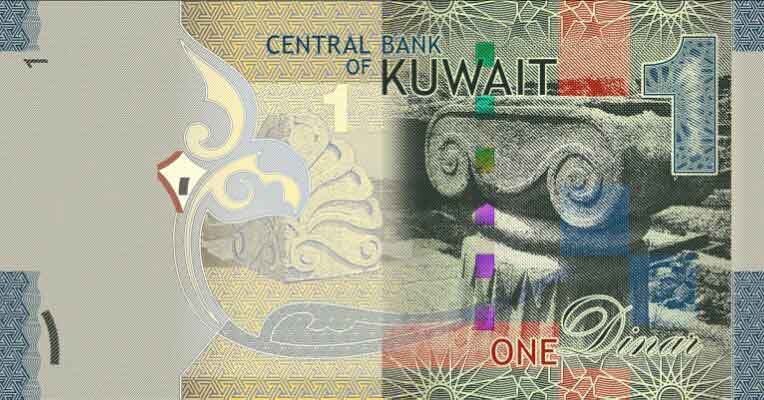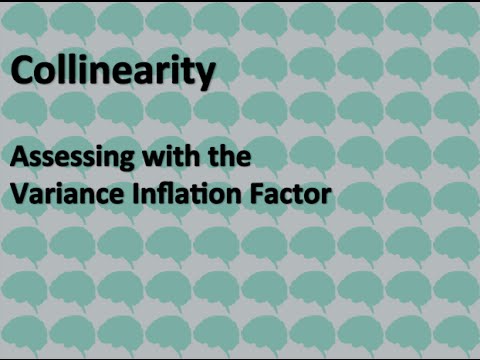What is Price Elasticity? Definition, meaning, and examples


Giffen or Veblen goods, on the other hand, range from zero to plus one. Price elasticities nearly always have an inverse relationship, i.e., when the price goes up demand declines. When there are many substitute products in existence, however, demand is usually elastic. Price elasticity of staple goods in high-poverty areas, however, are different. In high-poverty areas, they follow the demand-price relationship of Giffen goods. Function exists only implicitly and is typically needed explicitly only for numerical stress updates performed via direct integration of the actual stress rate.
- In response to this dramatic drop in demand, OPEC+ members elected to cut production by 9.7 million barrels per day through the end of June, the largest production cut ever.
- Though anisotropic linear elasticity theory could be used, a much more complicated model would result, which would address neither nor above.
- The price elasticity of demand measures the percentage change of the quantity demanded relative to its price change.
The material’s elastic limit or yield strength is the maximum stress that can arise before the onset of plastic deformation. Hooke’s law states that the force required to deform elastic objects should be directly proportional to the distance of deformation, regardless of how large that distance becomes. Now, let us move from the consideration of forces that affect the motion of an object to those that affect an object’s shape. A change in shape due to the application of a force is a deformation is also known as the elastic force.
Understand the world better with 40+ concepts.
Whenever any deformation takes place in elastic bodies its energy will be stored in the form of elastic potential energy. Cauchy elastic materials and hypoelastic materials are models that extend Hooke’s law to allow for the possibility of large rotations, large distortions, and intrinsic or induced anisotropy. Hooke’s law states that the force required to deform elastic objects should be directly proportional to the distance of deformation, regardless of how large that distance becomes. This is known as perfect elasticity, in which a given object will return to its original shape no matter how strongly it is deformed. This is an ideal concept only; most materials which possess elasticity in practice remain purely elastic only up to very small deformations, after which plastic deformation occurs.
Those bodies which regain its original configuration immediately and completely after the removal of deforming force are called perfectly elastic bodies, e.g. quartz, phospher bronze etc. Elasticity is a measure of a variable’s sensitivity to a change in another variable, most commonly this sensitivity is the change in price relative to changes in other factors. Since they are not essential to living life, consumers are picky about the price. Another example that often has elastic demand is goods purchased only a few times throughout one’s lifetime, like a washing machine or car; these tend to be elastic goods because consumers can shop around for a better price. Perfectly elastic demand means that even the slightest price change will deter consumers from buying the product.
If the price of an elastic good increases, there is a corresponding quantity effect, where fewer units are sold, and therefore reducing revenue. Relative elasticity means that if comparing the demand curve of two different goods and one has a greater consumer response to a price change, then the other is relatively elastic. In the real world of business, the two extremes of perfectly elastic and perfectly inelastic are not very common. However, economists and business managers often use the relative elasticity of two different demand curves to measure how consumers will react to price changes in different goods. Elasticity is a property of matter that explains the deformation of materials. When an external force is applied to a rigid body there will be a change in its length, volume, shape.
If you’re a teacher, the belief you have in your students will affect their performance. In fact, economist, Tyler Cowen, references an educational research paper that suggests an elastic relationship between teacher expectations and college completion among their students. The paper concluded that, in general, overestimating student abilities, while inaccurate, increased overall student success. In general, we consider products with scores greater than 1 as highly elastic. It looks like pizza delivery powered by AI-driven drones is a highly elastic service and raising prices won’t cover your costs. It is reasonable for these assumptions to be used in engineering materials and engineering design scenarios.

Strain-energy function from the results of experiments involving three-dimensional deformations, generalizing the one-dimensional situation described above. Elasticity is that property of the object by virtue of which it regain its original configuration after the removal of the deforming force. Perfectly elastic demand is infinity because the slightest price increase will make demand go to zero. The quantity that describes how fluids flow in response to shear stresses is called viscosity and is dealt with elsewhere in this book. This makes Young’s modulus the ratio of compressive stress to compressive strain. The adjective may have changed, but the mathematical description did not.
For such materials, the elastic limit marks the end of elastic behavior and the beginning of plastic behavior. This limit, called the elastic limit, is the maximum stress or force per unit area within a solid material that can arise before the onset of permanent deformation. Stresses beyond the elastic limit cause material to yield or flow. To a greater or lesser extent, most solid materials exhibit elastic behavior, but there is a limit to the magnitude of the force and the accompanying deformation within which elastic recovery is possible for any given material.
Under larger strains, or strains applied for longer periods of time, these fluids may start to flow like a viscous liquid. Elastic is a term used in economics to describe a change in the behavior of buyers and sellers in response to a change in price for a good or service. In other words, demand elasticity or inelasticityfor a product or good is determined by how much demand for the product changes as the price increases or decreases. An inelastic product is one that consumers continue to purchase even after a change in price. The elasticity of a good or service can vary according to the number of close substitutes available, its relative cost, and the amount of time that has elapsed since the price change occurred. Price Elasticity of Demand measures sensitivity of demand to price.
What Are the 4 Types of Elasticity?
Volume changes, but shape does notThe international standard symbols for the moduli are derived from appropriate non-English words — E for élasticité , G for glissement , and K for kompression . Some American textbooks have decided to break with tradition and use the first letter of each modulus in English — Y for Young’s, S for shear, and B for bulk. In economics, a demand schedule is a table that shows the quantity demanded of a good at different price levels.
However, if the consumer could not afford the new price of the product, they would likely have to learn to live without it, making the price elastic in the long-run. If a product has various available substitutes that exist in the market, it is likely that it would be elastic. If a product has a competitive product at a cheaper price in the market in which it shares many characteristics with, it is likely that consumers would deviate to the cheaper substitute. Thus, if many substitutions existed in the market, a consumer would have more choices and the elasticity of demand would be higher . In contrast, if there were few substitutions that existed in the market, consumers will have fewer choices and little to no available substitutes which means elasticity of demand would be lower . Income Elasticity of Demand is a measure used to show the responsiveness of the quantity demanded of a good or service to a change in the consumer income.
Income elasticity of demand, used as an indicator of industry health, future consumption patterns, and a guide to firms‘ investment decisions. In empirical work, an elasticity is the estimated coefficient in a linear regression equation where both the dependent variable and the independent variable are in natural logs. Elasticity is a popular tool among empiricists because it is independent of units and thus simplifies data analysis.
Perfectly inelastic demand means that no matter what the price change will be there will be absolutely no change in the quantity of demand. A value of 1 or higher indicates that the percentage elasticity definition change in price results in a more significant percentage change in quantity demanded. As we can imagine, certain goods are more sensitive to a change in price than others.
Advantages and Disadvantages of Using Elasticity
Spa days, for example, are highly elastic in that they aren’t a necessary good, and an increase in the price of trips to the spa will lead to a greater proportion decline in the demand for such services. Conversely, a decrease in the price will lead to a greater than proportional increase in demand for spa treatments. Elasticity is an economic concept used to measure the change in the aggregate quantity demanded of a good or service in relation to price movements of that good or service. Cross elasticity measures the change in demand for one good given price changes in a different, related good. A shift in either demand or supply of a good or service depending on its price. Demand is said to be elastic when it responds quickly to changes in prices, and inelastic when it responds sluggishly.
Spandex is a synthetic material that is the best example of fabrics exhibiting elasticity. But every material has its own limit for stretching beyond which it can not be stretched further is known as the elastic limit. A fun fact about elasticity is that rubber can be stretched to three times its original size. The object returns to its original shape after the removal of force i.e., the deformation is elastic for small deformations. Hyperelasticity is primarily used to determine the response of elastomer-based objects such as gaskets and of biological materials such as soft tissues and cell membranes. Even though the stress in a Cauchy-elastic material depends only on the state of deformation, the work done by stresses might depend on the path of deformation.
Modulus of Elasticity
A number of models have been used to describe the elastic behavior of objects that undergo finite deformations. Finite strain theory uses the F as the primary deformation measure. The elastic limit is the maximum stress or force per unit area within a solid material that can arise before the beginning of permanent deformation.
The symbol for Young’s modulus is usually E from the French word élasticité but some prefer Y in honor of the scientist. Income elasticity of demand measures the relationship between a change in the quantity demanded for a particular good and a change in real income. Advertising elasticity of demand measures a market’s sensitivity to increases or decreases in advertising saturation and its effect on sales. The elasticity of demand can be calculated by dividing the percentage change in the quantity demanded of a good or service by the percentage change in price. It reflects how demand for a good or service changes as its quantity or price varies.
Elasticity in Physics
This indicates a significant change in demand with each price change. On the other hand, the demand curve for gasoline is relatively a vertical line because the demand is not too sensitive to gasoline prices. This is elastic demand because a 20% increase in the price causes a 33% decrease in the quantity demanded.
For enterprise, the concept of elasticity also can be applied for pricing strategy. To answer that, it is suggested that if the demand of that product is elastic enough, it is profitable for enterprises to cut price and let the demand to increase over time. Though it is clear that the enterprise should not let their product price to pass by that inelasticity threshold, if so, then the product will be subject to price elasticity and be affected by declining demand over time. The Price Elasticity of Supply measures how the amount of a good that a supplier wishes to supply changes in response to a change in price.
Typically, goods that are elastic are either unnecessary goods or services or those for which competitors offer readily available substitute goods and services. The airline industry is elastic because it is a competitive industry. If one airline decides to increase the price of its fares, consumers can use another airline, and the airline that increased its fares will see a decrease in the demand for its services. Meanwhile, gasoline is an example of a relatively inelastic good because many consumers have no choice but to buy fuel for their vehicles, regardless of the market price. If the market price of an elastic good decreases, firms are likely to reduce the number of goods or services they are willing to supply. If the market price goes up, firms are likely to increase the number of goods they are willing to sell.
If a change in price comes with the same proportional change in the quantity demanded, it is said that the good is unit elastic. Indicating that X% change in price results in an X% change in the quantity demanded. Therefore, if the price elasticity of demand equals one, the good is unit elastic.
In the structural analysis and engineering design, linear elasticity is used often with the aid of finite element analysis. It turns out that a high elasticity of substitution between the primary factors labour and nature may harm the long-term growth rate. Similarly, changing the relative magnitude of aggregate supply and demand elasticities in the fourth and fifth rows does not destroy the incentives for activism. Companies that operate in highly competitive industries offer products and services that are elastic, as the companies tend to be price-takers.
